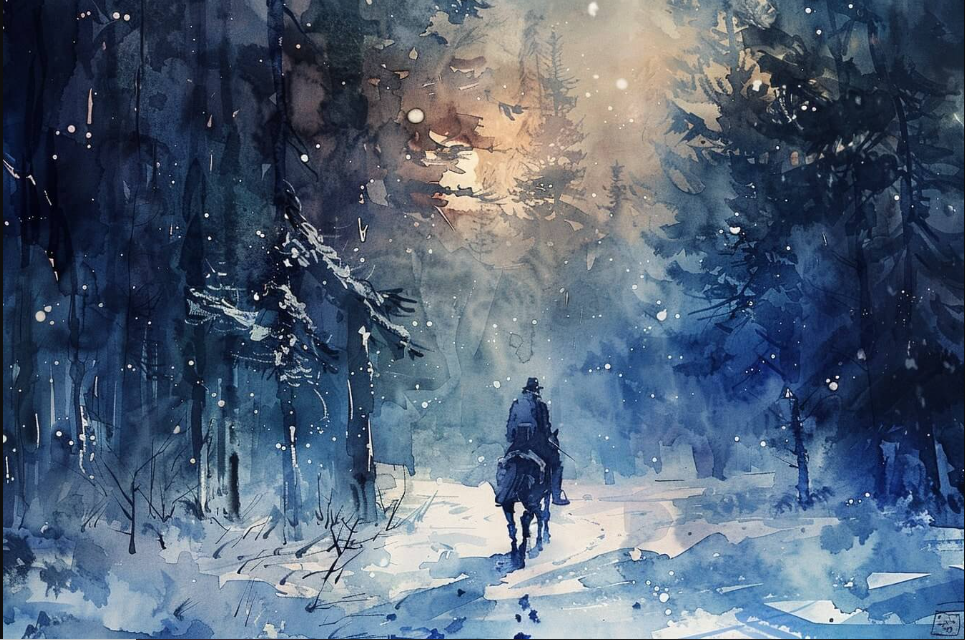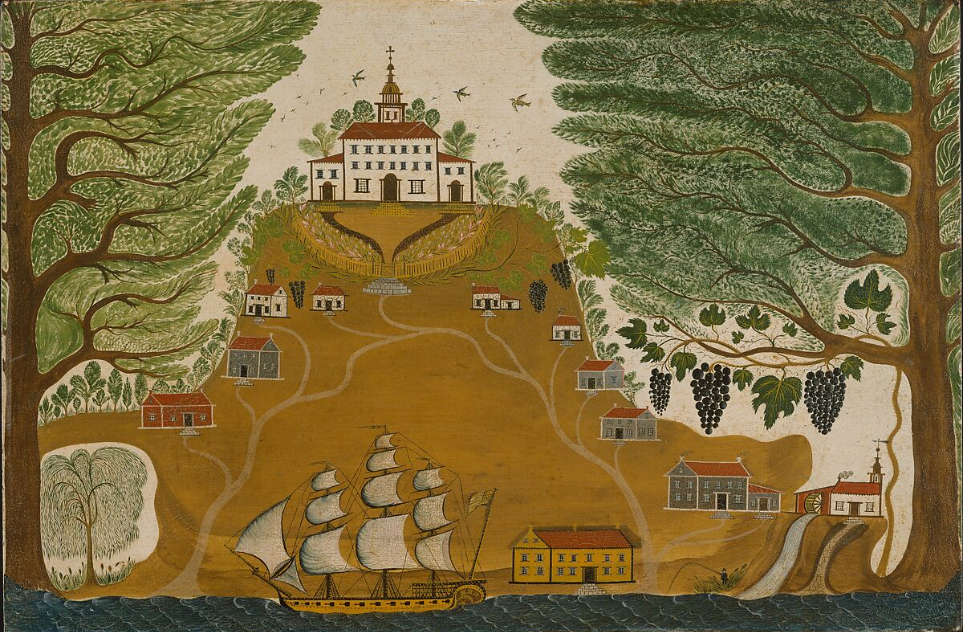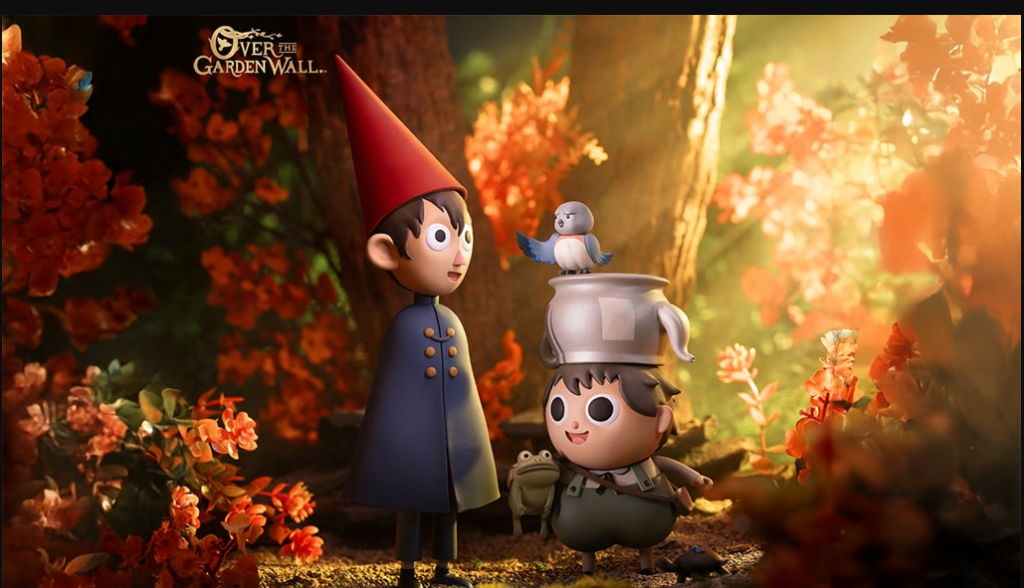🧭 Introduction: A Journey Through The Unknown
When Over the Garden Wall premiered on Cartoon Network in 2014, few expected it to become one of the most beloved and analyzed animated series of the decade.
Created by Patrick McHale (a writer on Adventure Time), this ten-episode mini-series is short, poetic, and deeply atmospheric. It tells the story of two half-brothers — Wirt, the anxious older sibling, and Greg, the cheerful younger one — who find themselves lost in a mysterious, almost dream-like forest called The Unknown.
On the surface, it’s an enchanting fairy tale about two boys trying to find their way home. But beneath its whimsical exterior lies a deeply emotional exploration of life, death, fear, and innocence. Over the Garden Wall isn’t just a cartoon — it’s a work of modern folklore wrapped in watercolor hues and haunting melodies.
🍁 Plot Summary: Through The Woods of The Unknown

The story begins suddenly: Wirt and Greg wander through a dark forest with no clear memory of how they got there. Along the way, they meet a talking bluebird named Beatrice, who promises to help them find Adelaide, a woman rumored to know the way home.
Each episode is a self-contained story, yet together they build a surreal journey through The Unknown — a world filled with talking animals, cursed villages, and old-timey characters straight out of American folklore.
They encounter:
- A Pumpkin-headed village that holds an eerie harvest festival.
- A lonely schoolteacher and her animal students.
- A ferry of frogs in suits, playing jazz on a misty river.
- And finally, the dark woods haunted by The Beast, a shadowy figure who preys on lost souls.
As Wirt struggles with his self-doubt and Greg’s innocence begins to fade, the boys realize that The Unknown may not just be a forest — it might be a liminal space between life and death.
In the final episodes, we learn that Wirt and Greg actually fell into a river back in the real world. The Unknown represents a sort of purgatory, and their journey is both a literal and spiritual struggle to return to life. When Wirt finally accepts responsibility and courage, the brothers awaken safely — their adventure lingering like a dream.
🎭 Main Characters and What They Represent
🧣 Wirt – Anxiety and Growth
Wirt, voiced by Elijah Wood, embodies the uncertainty of adolescence. He’s insecure, overthinks everything, and constantly doubts his decisions.
Throughout the series, he learns that courage isn’t the absence of fear — it’s acting despite it. His arc mirrors that of many young adults learning to trust themselves in a chaotic world.
🪣 Greg – Innocence and Hope
Greg, Wirt’s younger half-brother, is the perfect contrast — spontaneous, optimistic, and full of imagination. He represents the purity and wonder of childhood, a light that keeps Wirt grounded.
Greg’s kindness often saves them, proving that innocence can be a powerful form of strength.
🕊️ Beatrice – Guilt and Redemption
Once a human who turned her family into bluebirds through a careless wish, Beatrice seeks redemption by helping the boys. She’s a symbol of guilt and the hope for forgiveness — a reminder that even mistakes can lead to growth.
🌲 The Woodsman and The Beast – Fear and Despair
The Woodsman, carrying a lantern through the forest, is manipulated by The Beast, who convinces him that his daughter’s soul lives inside the light. In truth, The Beast feeds on despair — turning lost souls into Edelwood trees to fuel his power.
The Woodsman’s realization that he’s been serving darkness instead of protecting life is one of the series’ most chilling and powerful moments.
🕯️ Themes and Symbolism: Beneath the Autumn Leaves
1. Life, Death, and the Afterlife
The biggest fan theory — and one strongly supported by visual cues — is that The Unknown is a metaphorical purgatory. Each encounter teaches Wirt and Greg a moral lesson, like an allegorical journey through the stages of life and acceptance of mortality.
The warm yet faded color palette, the nostalgic music, and the constant autumn setting all evoke a sense of death and rebirth — the end of something old and the beginning of something new.
2. Fear, Guilt, and Courage
Wirt’s anxiety drives the narrative. His fear of failure and rejection traps him in self-doubt, much like The Woodsman’s fear binds him to The Beast.
Only when Wirt faces his inner darkness does he find the strength to escape The Unknown.
This parallels real-life struggles with mental health — suggesting that the true “beast” is often our own despair.
3. Childhood vs. Adulthood
Greg and Wirt symbolize two halves of the human spirit: the innocent curiosity of childhood and the cautious skepticism of adulthood.
The show suggests that growing up doesn’t mean losing your wonder — it means learning to balance imagination with responsibility.
4. American Folklore and Vintage Aesthetic
From the ragtime soundtrack to the old-fashioned character designs, Over the Garden Wall draws heavily from early 20th-century Americana — combining the charm of antique Halloween postcards with the eerie undertones of ghost stories.
The result is a world that feels both timeless and slightly unsettling — familiar, yet out of reach, like an old dream you can’t quite remember.
🎨 Visual Style and Music: A Folk Art Masterpiece

Visually, Over the Garden Wall is stunning. Every frame looks like a hand-painted illustration — warm ochres, deep blues, and muted greens that capture the feel of an eternal autumn evening.
The animation blends vintage and surreal aesthetics, drawing inspiration from:
- 19th-century storybook illustrations
- Silent-film era designs
- And even American Gothic painting traditions
The soundtrack, composed by The Blasting Company, is equally magical — a mix of banjos, clarinets, and melancholy vocals. Songs like “Into the Unknown” and “Come Wayward Souls” have become iconic for their haunting beauty.
Together, the visuals and music create a uniquely nostalgic experience — one that feels less like watching a cartoon and more like being told an old folk tale around a campfire.
🪞 Why It’s a Cult Classic
Despite its short runtime, Over the Garden Wall has achieved a massive cult following. Here’s why:
- Depth disguised as simplicity – It looks like a children’s cartoon, but every scene carries deeper meaning.
- Rewatch value – Each viewing reveals new layers of symbolism and hidden connections.
- Perfect autumn vibe – It captures the cozy yet melancholic feeling of fall better than almost any other show.
- Emotional storytelling – Themes of brotherhood, forgiveness, and courage resonate universally.
- Artistic innovation – It revived interest in short-form animation as an art form, proving that storytelling doesn’t need to be long to be powerful.
Fans return to it every year — especially during October — calling it “the perfect fall series” and “a modern fairy tale for adults and kids alike.”
🕰️ Legacy and Influence
Since its release, Over the Garden Wall has inspired countless fan theories, artworks, Halloween costumes, and academic essays.
Its success paved the way for other introspective animated projects like Infinity Train, Hilda, and Adventure Time: Distant Lands.
Patrick McHale’s storytelling — emotional yet understated — reminded the world that animation can be art, not just entertainment.
Even a decade later, Over the Garden Wall remains a touchstone for creators who want to tell deep, surreal, and emotionally intelligent stories in short form.
🌹 Conclusion: Into The Unknown, Forever Remembered
Over the Garden Wall isn’t just a show — it’s an experience. It speaks to the lost, the hopeful, and the nostalgic in all of us. Through its blend of eerie folklore, gentle humor, and heartfelt emotion, it reminds us that even in the darkest woods, there’s always a light to guide you home.
As Wirt once said, “We’re not here to be afraid; we’re here to be brave.”
And that, perhaps, is the real message hidden within The Unknown. 🍂✨

